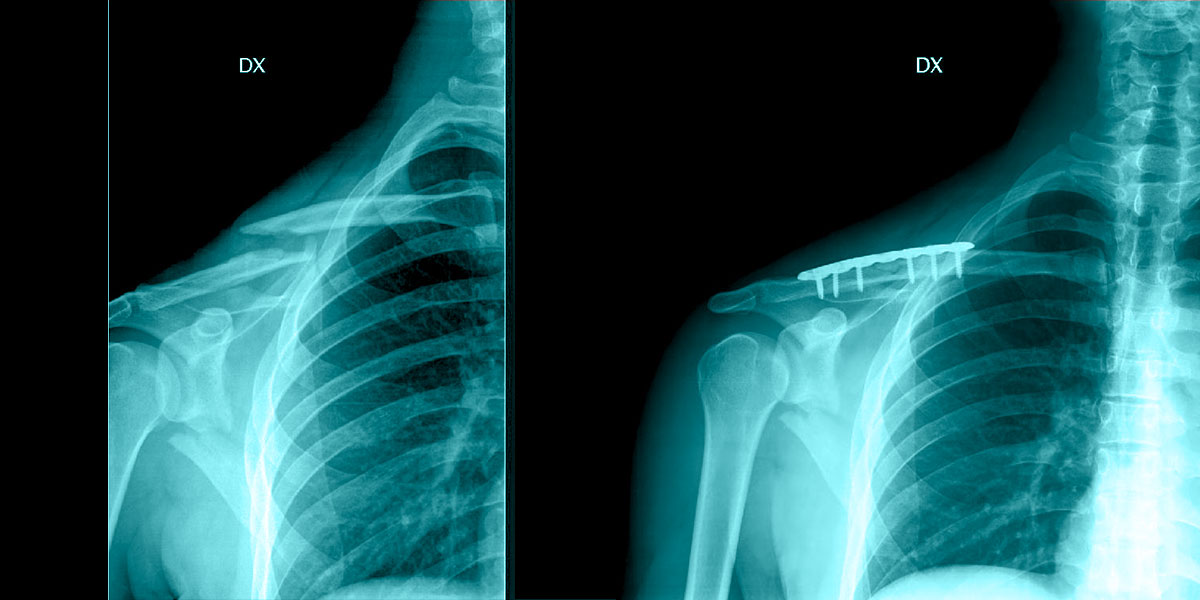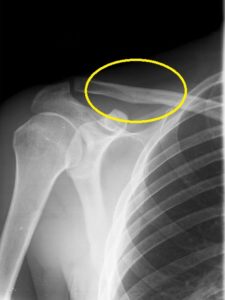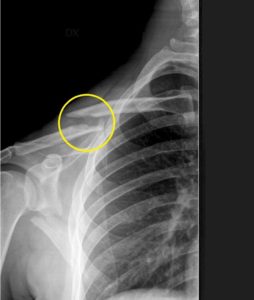The clavicle - or collarbone - connects the sternum to the scapula - or shoulder blade – and has a pivotal role in all movements of the shoulder. Collarbone fracture is frequently observed in athletes practicing contact sports. However, being “anatomically highly exposed”, clavicle fractures may also occur after relatively low-impact trauma, like falling off a motorbike or bicycle.
The causes
Collarbone fractures are commonly associated with sports like football, rugby, cycling and skiing. However, in our clinical practice it is not infrequent to have patients present with a clavicle fracture following a fall at home, a car accident, or fairly low-energy trauma.
Symptoms
A broken collarbone is often painful, swollen and bruised. Shoulder pain increases with movement. Sometimes the swelling is accompanied by visible distortion of the natural profile of the shoulder, and a distinct grinding sound when the patient raises his/her arm.
Diagnosis
When diagnosing a broken collarbone, the orthopedic surgeon will ask the patient how the accident happened and proceed to conduct a visual, physical and functional examination. An X-ray will be taken to detect the exact position and type of fracture. If there is any suspicion that the fracture has caused the detachment of several bone fragments, the surgeon will recommend Computerized Tomography (CT scan).
Conservative treatment
Usually, a fractured collarbone heals without the need for surgery. The patient will have to wear a brace and avoid any movement that might cause a displaced fracture. Pain killers and anti-inflammatory drugs will be administered if the patient is in considerable pain. After an adequate period of contention in a brace (20 / 30 days) to allow the collarbone fracture to consolidate - which will also alleviate any pain - the surgeon may recommend a control x-ray followed by a specially designed rehabilitation protocol to ensure full functional recovery.
Surgical treatment
Surgery is mandatory in the case of displaced clavicle fractures where the ends of the broken bone need to be realigned and stabilized during the healing process. Angular stable plates and screws will be inserted to fix the bone pieces in the correct position for good anatomical consolidation. Surgery involves a longitudinal skin incision of a few centimeters to provide direct vision of the fracture and ensure anatomical collarbone realignment. Plates and screws are usually in titanium, and if well tolerated by the patient, will not be removed. If necessary, removal will be carried out after 8 months.



